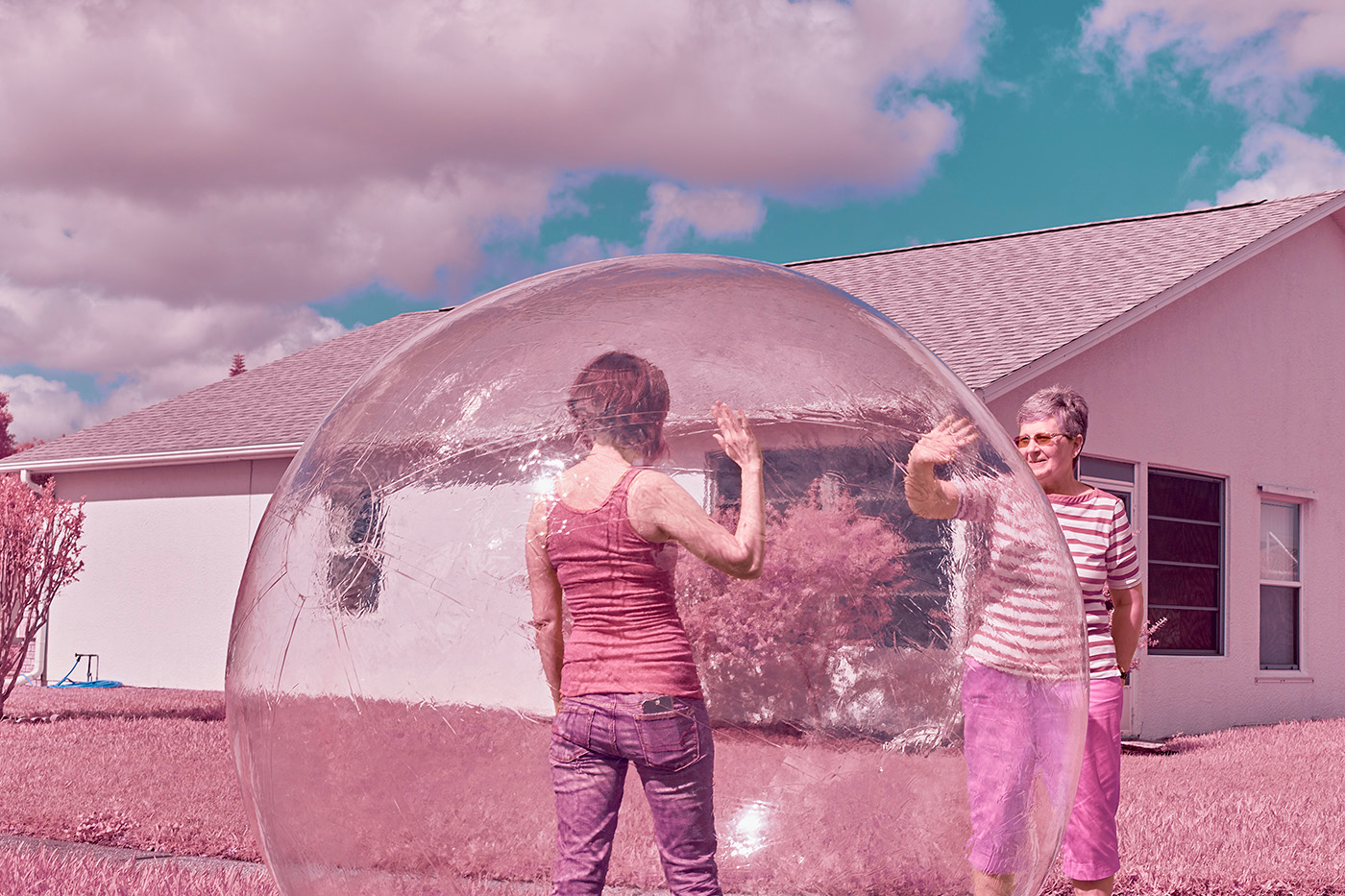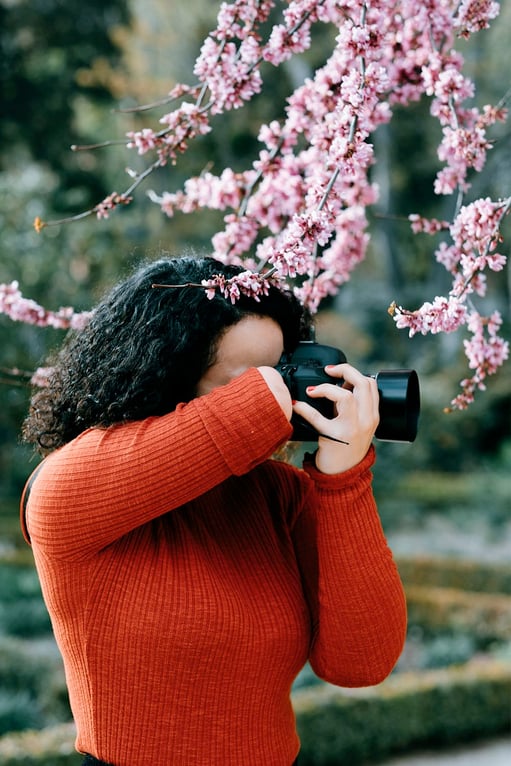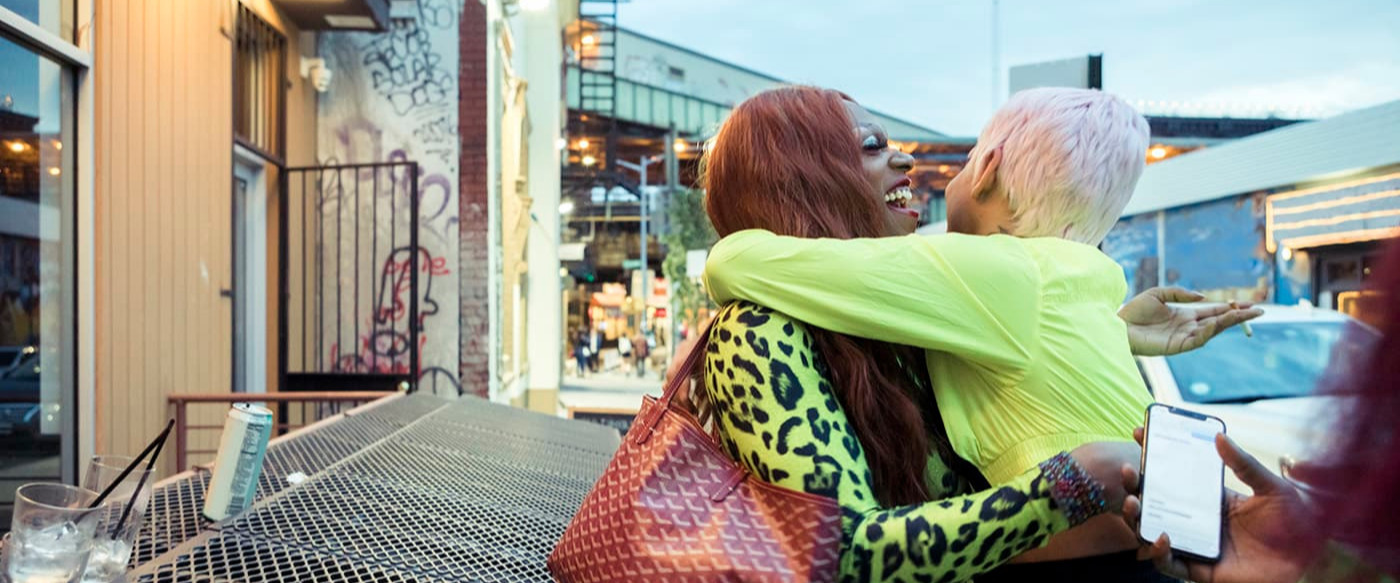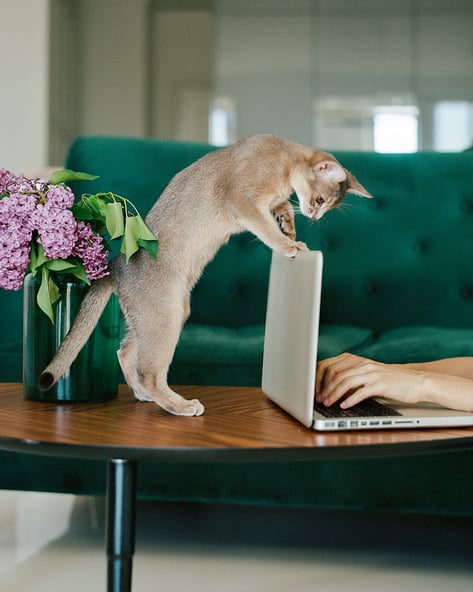Stocksy United: Curation and Community in a Stock Photography Co-op
Stock photography is not generally known for being an innovative field. When we think of stock photography we might think of women laughing alone with salads or awkward photos of white businessmen pointing at things.
But it doesn’t have to be that way. Stocksy United, founded in 2013, uses their co-op structure and multiple levels of curation to support both their co-op member artists and to give clients unique, authentic, high-quality photos and videos.
As a co-op, Stocksy’s members are also part-owners of the company. That means that every photographer whose photos are available for purchase on Stocksy has a say in the decision-making process at Stocksy and receives a share of surplus profits.
In true collective spirit, Stocksy CEO Mike Cook, Creative Marketing Lead Tara Campbell, Design Director Aleya Samji, and VP of Content Margaret Vincent joined forces to share their vision for simultaneously supporting artists, building a community, and using stock photography to push for better representation.
What are the origins of Stocksy?
The quick and dirty is that the founders of Stocksy were also founders of a company called iStock Photo. It's another stock photography agency that ended up being sold to Getty Images back in 2004. The anecdotal evidence that we have through talking to them is that it was sort of that classic founder’s story where they sold the company and then watched it get changed in ways that they didn't necessarily like, and in particular, the way it treated artists, the photographers and the cinematographers on iStock. It started off as this very collaborative sort of environment. But the model itself wasn't conducive to looking after the contributor base.
Once the founders got past their noncomp [non-compete clause], essentially, they decided to try to make a better vehicle for the artist themselves. It was a fortunate convergence of expertise in that they had understood the business model and successfully built a platform that sold stock photography. So they wanted to recreate that, but then make it a co-op. It was initially photographers and we've since had cinematographers come on board to provide video. But there was a group that had to kind of commit to giving their images to get this off the ground and they all became co-owners in the business.
 Photo by Chelsea Victoria
Photo by Chelsea Victoria
Why a co-op model? Of the ways that you could choose to build a platform that's designed to be more equitable and better for artists?
You could just build a platform and put in the rules and the mandates in place to treat the contributors fairly throughout, but it inherently has a weakness in that and that all it takes is a sale. All it takes is whoever is in control to exit and whoever comes on board now could change the rules drastically. And at its core, we can't. We can change our rules, our bylaws, but it has to be done through collaboration with the members of the co-op so that at its core, it provides this solid backbone that makes it truly a vehicle for the artists.
We've run into people who want to do a co-op and then as you start to explain what it means, you can see that when they recognize that [they] can't control everything. And then they want to back away. It's not like we can just decide tomorrow [and sell to a venture capital firm].
The phrasing that got used a lot in the early interviews about Stocksy was to make sure that the artists were in control. [The co-op model] establishes a sense of trust that was pretty important at that stage. A lot of artists have been disenfranchised and disenchanted that it was a reassurance that this is yours and your voice matters. A co-op model really forces that trust because if we don't have buy-in from our contributors, then we don't operate.
The scope of their input into the way things are done and the decisions that are made is pretty far-reaching.
 Photo by KKGAS
Photo by KKGAS
What about the nuts and bolts of how that co-op model works for you folks?
There are three classes of members.
We have Class A members, Class B members and Class C members. They all have equal votes. There's no disproportionate share of voting. Class A members, there are up to five of them. They are board members and can be a mix of founders and advisors. That allows us the ability to bring in outside advisers to sit on the board, which is often a very good thing to make sure we’re not getting too inward-looking.
We also have on the board two Class B members that come from our employee base. Class B employees are also members of the co-op. There are two Class C contributors voted to the board as well. They come from the contributor base. That's the structure in terms of the membership. There's board representation from all classes [of members].
Obviously, it's kind of counterproductive to have voting on every single decision that gets made. There is still—in many ways—a classic corporate structure [at Stocksy] in that there's a CEO appointed by the board and then the management team and employees that are there to keep the engine running and to connect to the customers and get the sales in. But the membership does have a mechanism by which they can submit resolutions to the co-op that need to be given consideration and are voted upon. That's a whole process but it does allow their voices to be heard on top of having the board representation.
Class A is generally appointments. But Class C's and Class B's are three-year terms for each and they're voted from everybody's membership there.
What are some of the other benefits for a co-op model?
Not to be crass about it, but money. There are other sites out there that have similar royalty structures as we do, but we are one of the best-paying stock sites out there. Every license that's sold, 50 percent of it goes right to the artist. And on extended licenses, if a company wanted to put an image on a bunch of mugs that they were going to produce, then they might buy what's called the “products for resale” license. Those types of licenses, they get 75 percent. We're built so that we do not and cannot degrade that.
In other companies, they could cut a deal with Company X and only sell the assets for 20 percent of what their normal prices are. So [the artist would] get 50 percent of that. So in the end, [the artist might] only get 10 percent. Royalties for our contributors are top of mind for us as to how we're able to pay them as much as we possibly can. So that's probably one of the most major benefits. There are softer, more intangible aspects of being in a co-op where they do come together.
We've got a forum where [members] can talk to each other. It's really cool to see. It can be fractious at times. Anytime you bring in 13 hundred people from over 70 countries, you can have ESL issues and you've got different cultural issues. But it is pretty amazing where you have people who are competing at one level because they're all trying to sell their own photos but they've agreed to come together on this platform and jointly make it a place where they have a better opportunity to succeed and they really do support each other.
Members that will post something about, “Hey, I'm having trouble with this type of gear. Does anybody have any experience with this?” And others will weigh in. That is pretty cool to see. As we build trust between HQ and the membership, but they also have a lot of trust among themselves.
We also hosted contributor meetups back when we could actually do that. Obviously, there hasn't been one for a while, but there was an IRL component. So in addition to that forum community, there were a lot of meetups and gatherings going on. Because our contributor base isn't millions of people, you actually end up forging a lot of really special friendships.
That's really how we're trying to push the co-op form. The existing legislation [at Stocksy] all speaks to meetings and voting as something that happens in a room with a group of people. What we've really tried to do is carry on the intention of those pieces but in a digital space. One of the aspects of having an in-person resolution vote is that everyone can discuss it. So we do that in our forums. And so we don't have to have a particular date and time at which everyone votes. We can allow for voting across their different time zones and days and for a longer period of time. But we've still created that intentional space for conversation and discussion.
 Photo by Agha Waseem Ahmed
Photo by Agha Waseem Ahmed
The thing that you're noting is that even though these people are technically in competition, you see a lot of collaboration. Ultimately, the rising tide of artists getting paid for their work lifts it for everyone.
The more successful we are, the more we can prove that this works. And because we can pay out surplus profits, the better we do as a whole, the more is in that pool to distribute. That gets distributed to the artists in proportion with how much they sell. Their percentage of the whole is how their return is calculated.
This leads naturally into where you see yourself in the larger industry. And that might mean the stock image industry or in the world of freelance photographers and freelance creatives. How do you see yourselves being a part of those larger conversations and issues?
We like to think we're a shining beacon of hope. Who doesn't?
We definitely have disrupted the traditional stock agency pieces. [Margaret Vincent] is involved in the Digital Media Licensing Association, and it's always striking to me that [she’s] one of the few people that brings up artists. [The DMLA] talks a lot about business and a lot of organizational things, and [Margaret] tends to be one of the people who's constantly talking about our artists because [she] does have a personal connection to them.
This is something that we think about a lot and is a really strong driver for how we operate. Yes, artist empowerment and paying artists fairly. But the other piece is the impact that the imagery that we have. And conversely, the imagery that we don't have, how that impacts media at large and representation specifically. So we recognize that we hold a really, really powerful card in that.
The imagery that is available on our site not only has to be representational in a way that the publisher and publishers, advertisers, brands, banks, etc. have access to imagery that can show people themselves in the real world but that also the imagery that is being purchased is from a widely representational creative class. And that's really this powerful position that we have that we can influence the media.
The recent changes in the industry have made this particular point for us and this value that we know that we offer. It's become much, much more salient just because the demand and the attention for better representation is higher than it was before.
We're also aware that we benefit from working with a higher caliber of creative class, both in terms of our contributor base and our client base, our customers, whether it's the enterprise-level brands and just the caliber of the art directors that are coming to Stocksy to furnish their creative concepts. But of late, all of that has been dialed up significantly.

Photo by Suzanne Clements
COVID means that custom shoots aren't happening and Stocksy's become the go-to for being able to complete major campaigns without having that compromise happen. Which then means that that seat at the table that we can offer to our contributors is much more meaningful now than it ever was before.
Part of our job is to anticipate what advertising is going to need next year. We need to have what the world is going to be looking for before they even know that they're looking for it. So that gives us a lot of opportunity to really steer a direction by being able to not only provide imagery that's representational, but that is that is actually supporting a wider representational creative class.
How have you tried to make sure that you are providing content that represents the richness of lived experience?
That's part of Stocksy's origin story actually! Stocksy was founded to support artists, but also to disrupt the stock industry because there was an awareness within our founders that people needed imagery that was actually representational of life and wasn't this weird blown out background of like Bob and Doug shaking hands in front of a graph.
And people pretending to use wheelchairs!
That's a real piece for Stocksy; the authenticity and the imagery that's being created, who it's being created by. There's a story behind it, there's a real life moment happening there. Stocksy was actually a big pioneer in [making stock imagery more authentic]. And then once the bigwigs kind of started catching up, the next wave of that authenticity was demonstrated authenticity, where the focus of the image is the person in the wheelchair as opposed to it being a story about some friends hanging out eating pizza and one of them is in a wheelchair. There's less of a focus on othering and ensuring that there's a more inclusive and real picture of everybody.
 Photo by Thais Varela
Photo by Thais Varela
It's something that's always been happening and aggressively being directed in the collection. But it's definitely right now in this moment, a very big piece of work that's happening at Stocksy. We are taking our understanding of what it is we're doing and formalizing it into an actual policy around our collection, something that we're very transparent about.
We are just launching a curator-in-residence program so that we have this ongoing acknowledgment and understanding that we want our attitude towards this policy to be checked and balanced for a bunch of biases that will always be there. And blindspots that we'll always have by as wide a range of expertise and lenses as possible.
Tell me more about what curation looks like, including this new curatorial position.
Curation has really shifted quite a bit in the last few years. So when we were originally founded, Brianna Wettlaufer was our CEO and also head of content and the sole curator for the collection. So early on, she was the person pushing what our initial homepage feed looked like. Essentially her vision became the curated feed. And then as she expanded her role and ultimately moved on from Stocksy, we [now] have a team of various staff and contractors who handle curation at this point.
We have a couple of different tiers of curation. Some are tied to search. Some are not tied to search anymore. At this point, we have a team of people making these selections across the creative marketing, the editor team, the content team, etc. The curation also happens at a bunch of different points.
[Curation] happens at the level of artists, deciding who we're accepting into the co-op. It happens again at the level of ingesting their assets as they provide them to us and deciding which ones to accept and then it also happens within the collection.
We have various algorithms that impact all the ways in which the collection surfaces for different searches and surfaces when we're promoting what we think Stocksy is about on the home page. There's considerations for technical merit, there's considerations for relevance of the topic, those authentic moments. And considerations for stuff that we just know doesn't exist in abundance.
 Photo by Joselito Briones
Photo by Joselito Briones
We're always combing and auditing the collection for gaps and missing pieces, not just within the collection. Maybe there's a movement that is new and we need to make sure that we're fulfilling that need. For instance, there's not a lot of imagery out in the world of people of color swimming. There might be a little bit more weight that's given to content of the like, because we want to make sure that we're able to surface that because that's something that needs to be in front of people's eyes. There's also down curation that happens, too as we become aware of sensitivities around certain things that we were not really that sensitive about, say, five years ago.
There's a set of eyes combing through the collection regularly to cull things that are problematic or that are no longer relevant or dated. It happens with things as simple as technology advancements as well as, you know, social advancements.
[Our curator-in residence program] is kind of one of the more exciting things [we’re working on]. So we have worked with a couple of organizations in the last few months. We worked with Allied Media and Authority Collective. They're both really incredible organizations that are great resources for BIPOC creators and LGBTQ+ creators. And there's just a wealth of expertise there. We sponsored the Allied Media Conference and that was the beginning of the curator-in-residence program where we wanted to start establishing relationships and getting to know people that could bring a lens to Stocksy that we don't necessarily have. We're aware that we need to have input from various people, from various backgrounds to be able to have that critical eye and be able to call us on our shit when maybe we got something wrong. And to review our content policy.
The terminology doesn't make a lot of sense because residence usually means that like either it's an unpaid position or it's like a room and board provided situation. [This] more like a consultant position. They definitely [will] be paid.
We're a small co-op. The larger and more range of the curatorial eyes we can provide, the better. But...we have a cap on the resources. So the residency program is a really a way we can kind of bring in as much of a varied lens into that fundamental part of our work as we can.
The co-op model is an appealing model for creatives across industries looking for more security and solidarity. The Brooklyn-based Sound Co-op is using a co-op model to build collective power among freelance sound workers, to forge connections with other co-ops, and to share crucial knowledge about workplace safety across industries where remote work isn’t an option.
Cover photo by Joselito Briones
About Nina Berman
Nina Berman is an arts industry worker and ceramicist based in New York City, currently working as Associate Director, Communications and Content at Fractured Atlas. She holds an MA in English from Loyola University Chicago. At Fractured Atlas, she shares tips and strategies for navigating the art world, interviews artists, and writes about creating a more equitable arts ecosystem. Before joining Fractured Atlas, she covered the book publishing industry for an audience of publishers at NetGalley. When she's not writing, she's making ceramics at Centerpoint Ceramics in Brooklyn.



